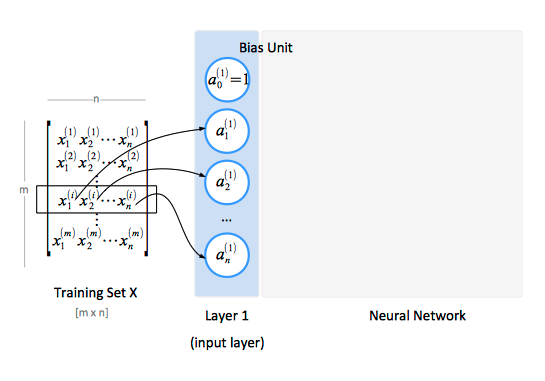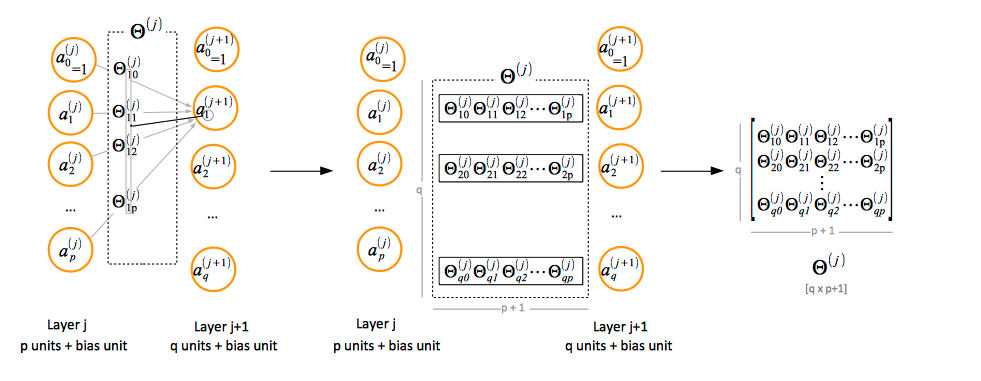Neural Networks: Difference between revisions
| Line 3: | Line 3: | ||
* [[Machine Learning#Subjects|Machine Learning]] | * [[Machine Learning#Subjects|Machine Learning]] | ||
=Individual | =Individual Unit= | ||
Individual neurons are computational units that read ''input features'', represented as an unidimensional vector x1 ... xn in the diagram below, and calculate the hypothesis function as ''output''. Note that x0 is not part of the feature vector, but it represents a bias value for the unit. The output value of the hypothesis function is also called the "activation" of the unit. | Individual neurons are computational units that read ''input features'', represented as an unidimensional vector x1 ... xn in the diagram below, and calculate the hypothesis function as ''output''. Note that x0 is not part of the feature vector, but it represents a bias value for the unit. The output value of the hypothesis function is also called the "activation" of the unit. | ||
Revision as of 06:38, 4 January 2018
Internal
Individual Unit
Individual neurons are computational units that read input features, represented as an unidimensional vector x1 ... xn in the diagram below, and calculate the hypothesis function as output. Note that x0 is not part of the feature vector, but it represents a bias value for the unit. The output value of the hypothesis function is also called the "activation" of the unit.
A common option is to use a logistic function as hypothesis, thus the unit is referred to as a logistic unit with a sigmoid (logistic) activation function.
The θ vector represents the model's parameters (model's weights). For a multi-layer neural network, the model parameters are collected in matrices named Θ, which will be describe below.
The x0 input node is called the bias unit, and it is optional. When provided, it is equal with 1.
Multi-Layer Neural Network
Notations and Conventions
ai(j) represents the "activation" of unit i in layer j.
Θ(j) represents the matrix of parameters (weights) that controls function mapping from layer j to layer j + 1.
The Input Layer
The input nodes are known as the input layer, which is also conventionally named "layer 1". The input layer gets fed the training values. A training set contains a number of samples (m), and each sample has a number of features (n). The features of the training set are conventionally represented as a matrix X.
The Output Layer
The Hidden Layers
Paramenter Matrix Θ Notation Convention
If the layer j has p units, not counting the bias unit, and layer j + 1 has q units, not counting the bias unit, then the parameter matrix Θ(j) controlling function mapping from layer j to layer j + 1 has q x (p + 1) elements. The "+1" comes from the addition of the bias node in layer j.




